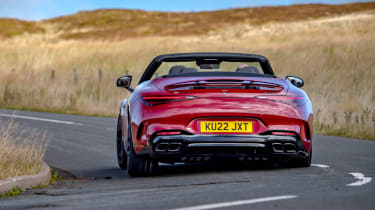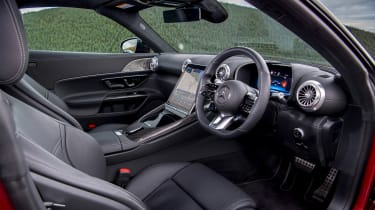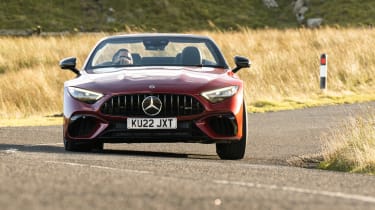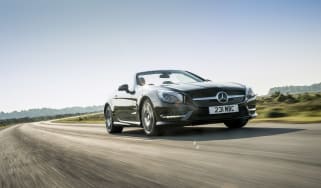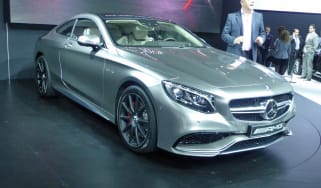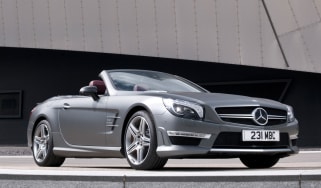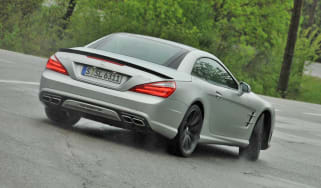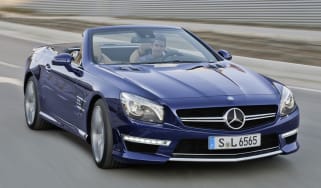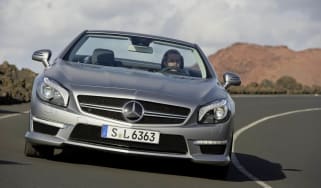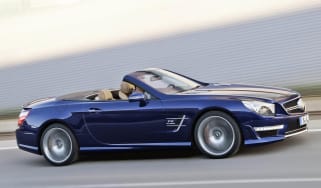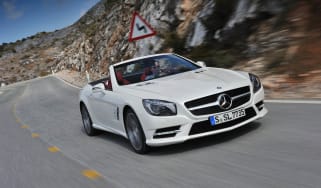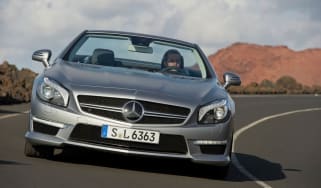Mercedes-AMG SL55 4Matic 2023 review
Merc’s new SL roadster sits between chilled-out cruiser and AMG hot rod, but doesn't quite nail either personality trait...
Like the Porsche 911, Merc’s new SL has always done things a little differently. Carved its own path while others chased each other along the same route; stood out where rivals would be hidden by a certain level of ubiquity. Which makes the all-new SL a big bold step by Mercedes-Benz. Why so? Because the £147,475 SL55 is an all-new SL that Mercedes hopes will lift it up against premium rivals, and take it into direct competition with Bentley, Ferrari and Porsche.
Built on an all-new aluminium platform the new SL – the R323 – not only replaces the outgoing R231 two-seat convertible, but will also take on the role left by the S Class Cabriolet and Coupè models, as well as forming the basis for the AMG’s new GT model. To achieve its goals the new SL has been designed and developed solely in Affalterbach by AMG. That’s quite a move by Mercedes for one of, if not the most iconic car in its line-up alongside the G Wagen.
Three new SL models are offered in the initial line-up starting with the £108,020 SL43 powered by a two-litre, mild-hybrid turbocharged four-cylinder motor producing 395bhp and 354lb ft of torque. At the top of the range sits the £171,725 SL63, powered by the same 4-litre hot-vee twin-turbo V8 as the 55, but producing 585bhp and 590lb ft. At a later date AMG will also add its plug-in hybrid E Performance powertrain from the GT63, with around 800bhp.
More reviews
Currently positioned between the existing two SLs in the range is this £147,475 SL55 that uses AMG’s M177 twin-turbocharged four-litre V8. Its headline figures of 469bhp and 516lb ft aren’t actually all that headline-grabbing in AMG terms when you consider it also sells a 416bhp hot hatch. Now obviously 469bhp is still a large power output, but not when it’s being asked to haul around a claimed 1970kg kerb weight (when we drove our test car on to the scales having filled the fuel tank the result was 1940kg).
Despite a power-to-weight ratio similar to an Audi RS3 the SL55 doesn’t feel that quick off the line nor when you’re up through the gears and cracking on. It lacks those whip-crack responses expected of AMG badged cars, the rate of acceleration feeling merely quick enough despite the expectations of its 3.9-secs 0-62mph time.
Shifting through Mercedes’ wet-clutch nine-speed auto, the SL55 feels almost single geared, so smooth are the shifts both up and down, and so well suited to the M177’s delivery that you can go for miles, days perhaps, without even thinking about what gear you are in or whether you should change them yourself. Push on and you might be tempted by the latter, but this does require engaging with the switch-like paddles that are far from involving. If you get carried you can also find yourself in a gear or two higher than expected, which of course means shifting down more than you were expecting too. And while the upshifts are quick, the downshifts are less so. Best bet is to leave it in auto and let the algorithms deal with it.
Underpinning the SL55 is Mercedes double-wishbone suspension front and rear with AMG’s ride control active dampers matched to a set of fixed rate coil springs. The SL63 comes as standard with a McLaren-esque hydraulically-linked damper system that does away with the anti-roll bars. If you want an electronically-controlled locking differential in the rear axle you’ll need to spend a bit extra and order AMG’s Dynamic Plus package, which wasn’t fitted to our test car.
With such a great deal of mass to manage the SL55 isn’t the quickest to respond, yet its dampers have a great deal of control over the body, managing its bulk while allowing the chassis to maintain a measured approach with the road. It absorbs big compressions far better than you’d think as it sinks into its haunches and rebounds in a fluid motion. However, as we discovered on our 2022 evo Car of the Year test, should it need to deal with a challenging compression, or change of direction immediately after it can feel detached and a bit mute, like it’s still catching its breath from the previous endeavour.
It’s not helped by steering that feels two-dimensional and doesn’t let you build up a pattern of what’s happening beneath you. Both the standard-fit 4Matic four-wheel drive system and rear-axle steering feel incredibly intuitive, though. The former not only generates serious traction, but it does so in a fashion that makes you aware of which axle is dealing with the lion’s share of the torque at any one time; the latter adds some much needed directness and response to how the SL55 gets in and out of a corner.
It won’t come as a surprise to hear the SL55 is better at six or seven tenths than it is when you’re trying to approach the higher reaches of its performance capabilities. Driven hard it still feels too close to SLs of old when they were given an AMG badge and a skip load of power and torque, feeling like go-faster GTs that didn’t really want to go as quickly as they could. Yet previous generation SLs were always a more refined way to make progress rather than ones to go off the rails completely, confident in their ability to do exactly what was expected, rather than try and be something it was never intended to be.
However, the new SL is a little tricky to pin down when it comes to fulfilling its core remit. AMG's input is clear from the moment you approach it, brooding with confidence from every angle. Yet it lacks the grace of its predecessors, their timeless class replaced with a design that’s too generic, and jewellery that’s overstepped the mark into bling territory. It continues inside, too, with brightwork and design details that lack the class of previous generation SLs. Its cabin lacks the simple class SLs are renowned for. The infotainment screen is vast, dominating the interior and as a result it feels like Mercedes included functions within it because it could, rather than it needed to. To open the roof, for example, you need to slide a control on the screen for no apparent benefit other than that you can. What was wrong with a switch?
It’s not as refined at low speeds as a Continental V8 either. While its ride impresses at pace, it feels strangely brittle when you’re expecting it to be whisper quiet at lower to medium speeds, and the adoption of a new fabric roof has introduced a level of wind noise totally unexpected of an SL and a car at this price point. And as per many modern Mercedes models the level of squeaks and rattles from the cabin also feels unexpectedly high. And yet with the roof open the buffeting is non-existent, almost, and comes with all the toys to keep you warm in cold weather – very welcome and brilliantly efficient. When driven as such, it becomes a more engaging experience as a result, feeling as you expect an SL should.
This is also the first SL in multiple generations to offer two small rear seats, which doesn’t improve practicality in terms of transporting people, but the space is useful when the boot’s full. It also adds to the frustration that the new SL is the size it is in order to integrate those two seats, which are largely pointless at the cost of it being SL-like in other areas.
Price & Rivals
With the new SL AMG is hoping to appeal to existing loyal customers, those looking for a replacement for their S63 Cabriolet as well as enticing some out of their 911 Carrera and Turbo cabriolets and Targas, too. Then there’s Bentley’s Continental GT convertible, the only genuinely four-seater convertible and Ferrari’s hugely improved Portofino M.
On this evidence the SL55 is a more refined, less frantic approach to open-top motoring than a 911. But it’s also not as sharp, nowhere near as engaging or rewarding to drive as the Porsche, and we feel the Ferrari would have it licked in every area, which leaves the Bentley. The British built car certainly has the craftsmanship to put the AMG-built SL in its place, and while its engineering suggests the car made in Germany looks to have Crewe’s missile licked, I wouldn’t bet against it on the road just yet.


